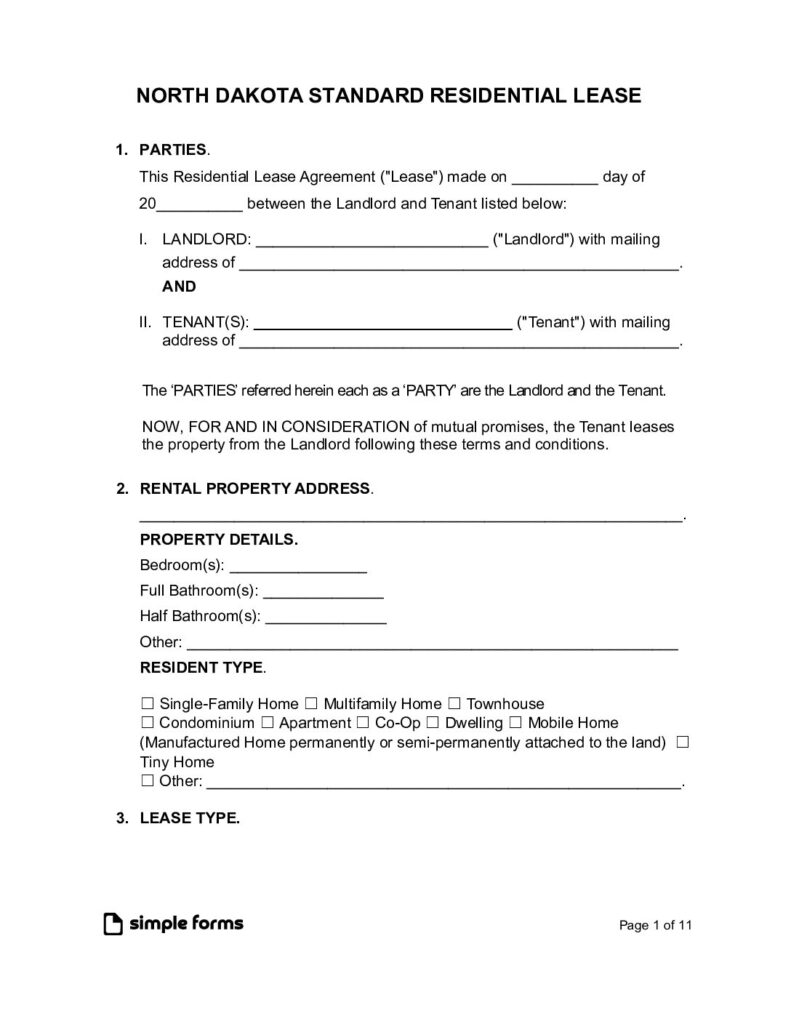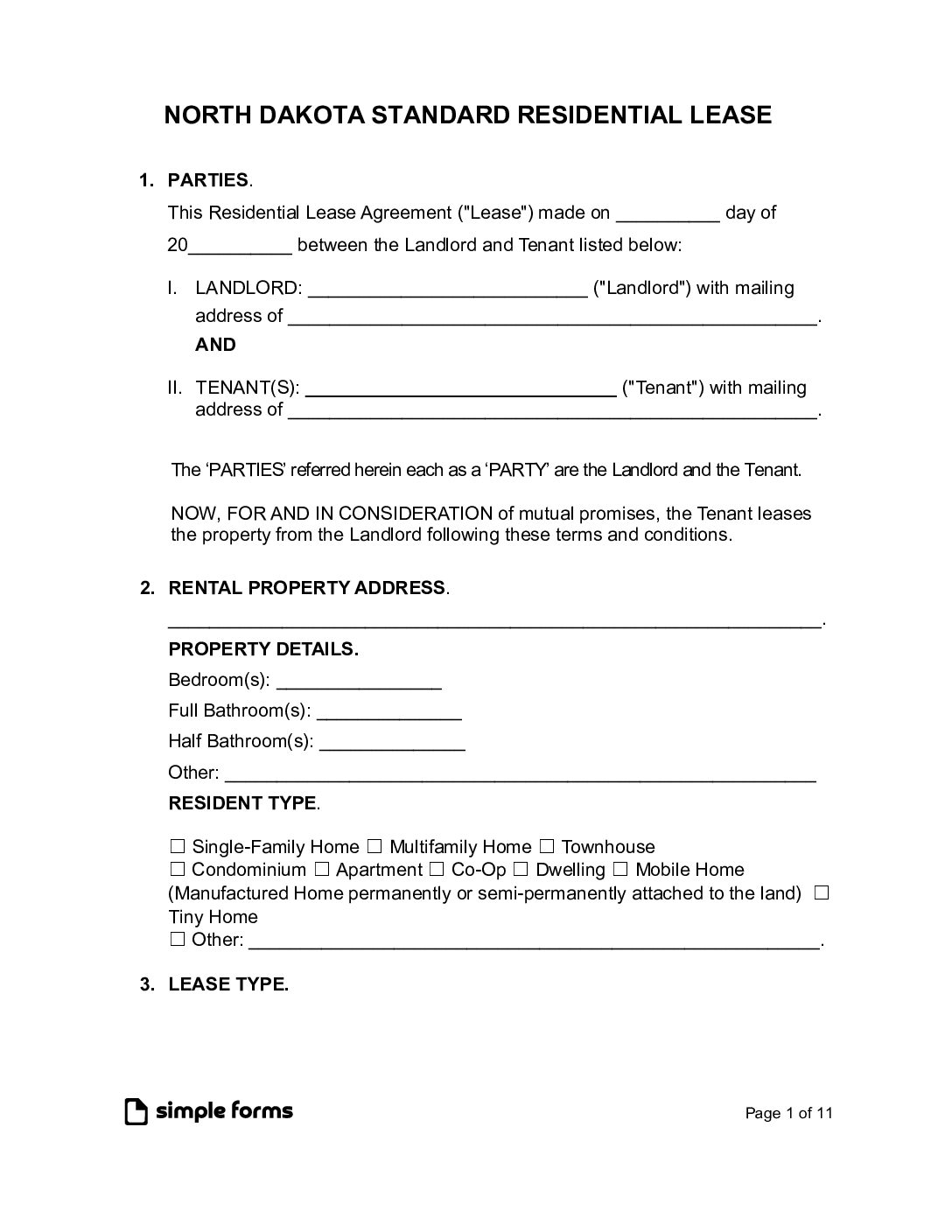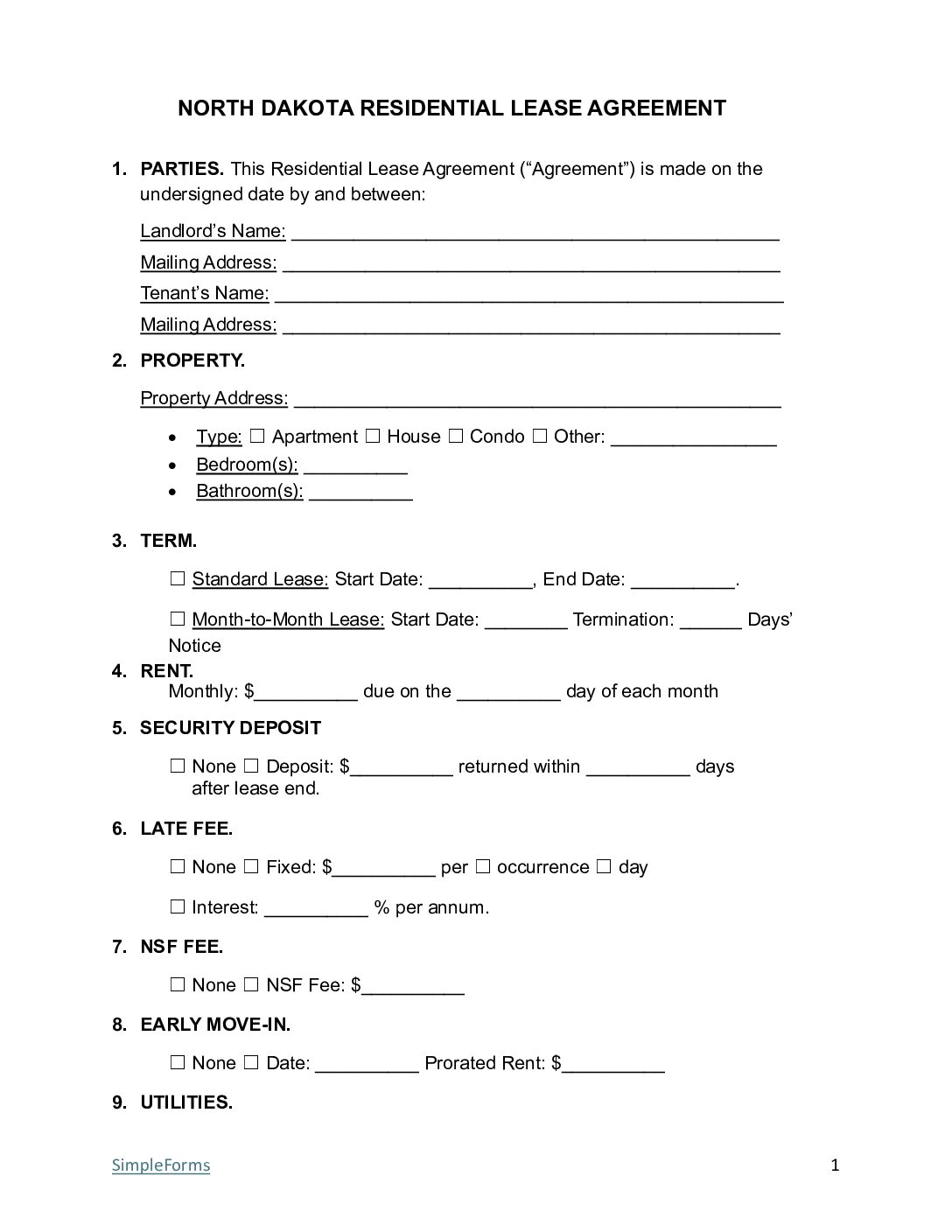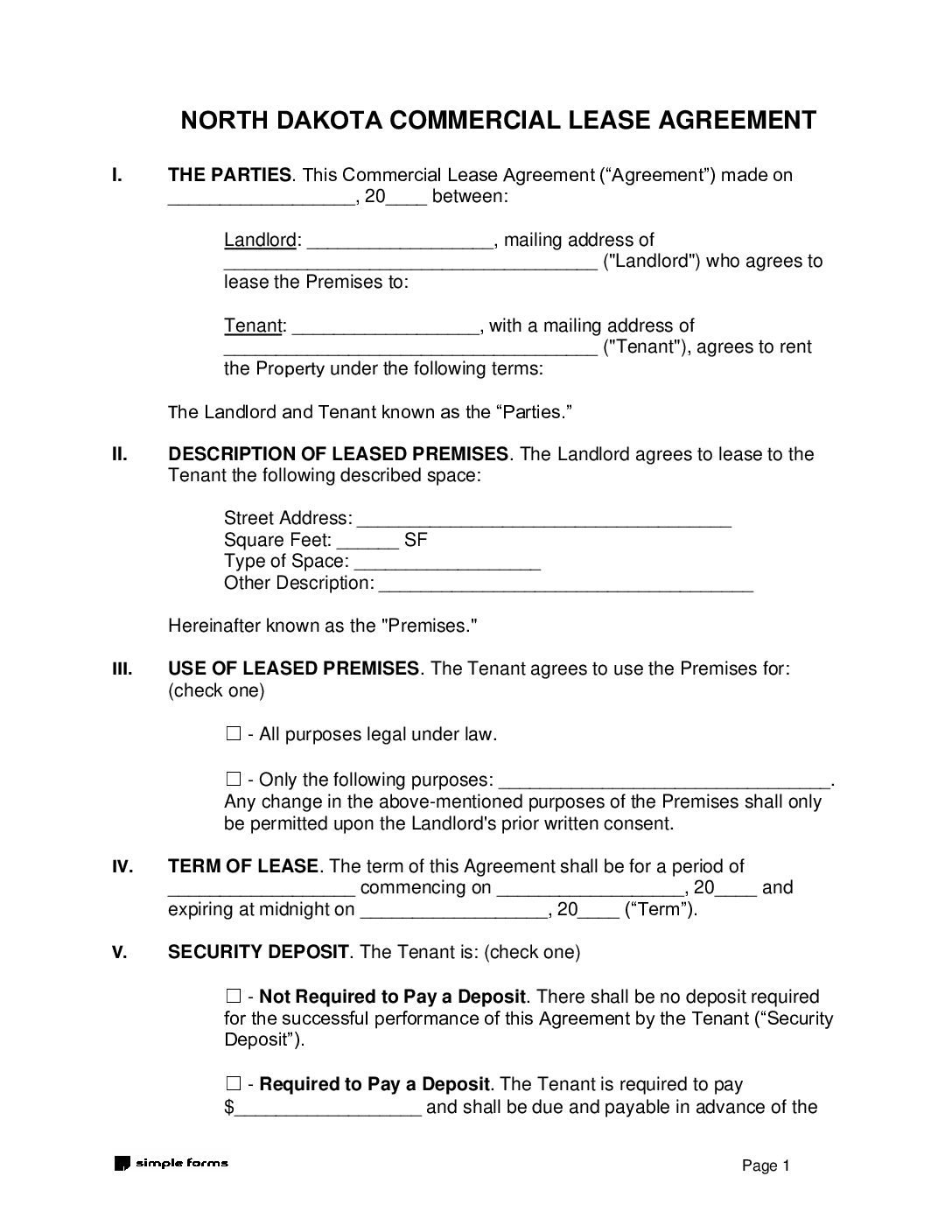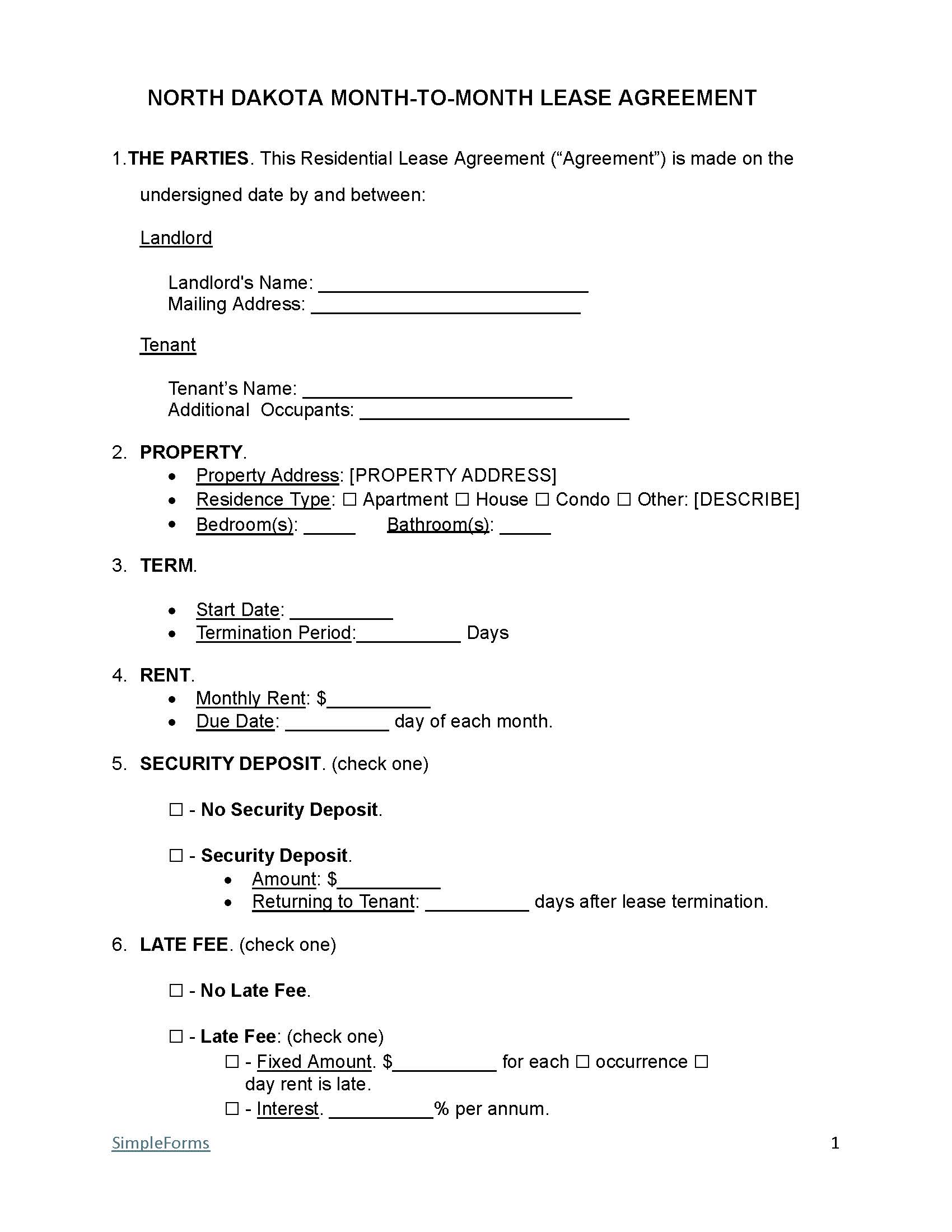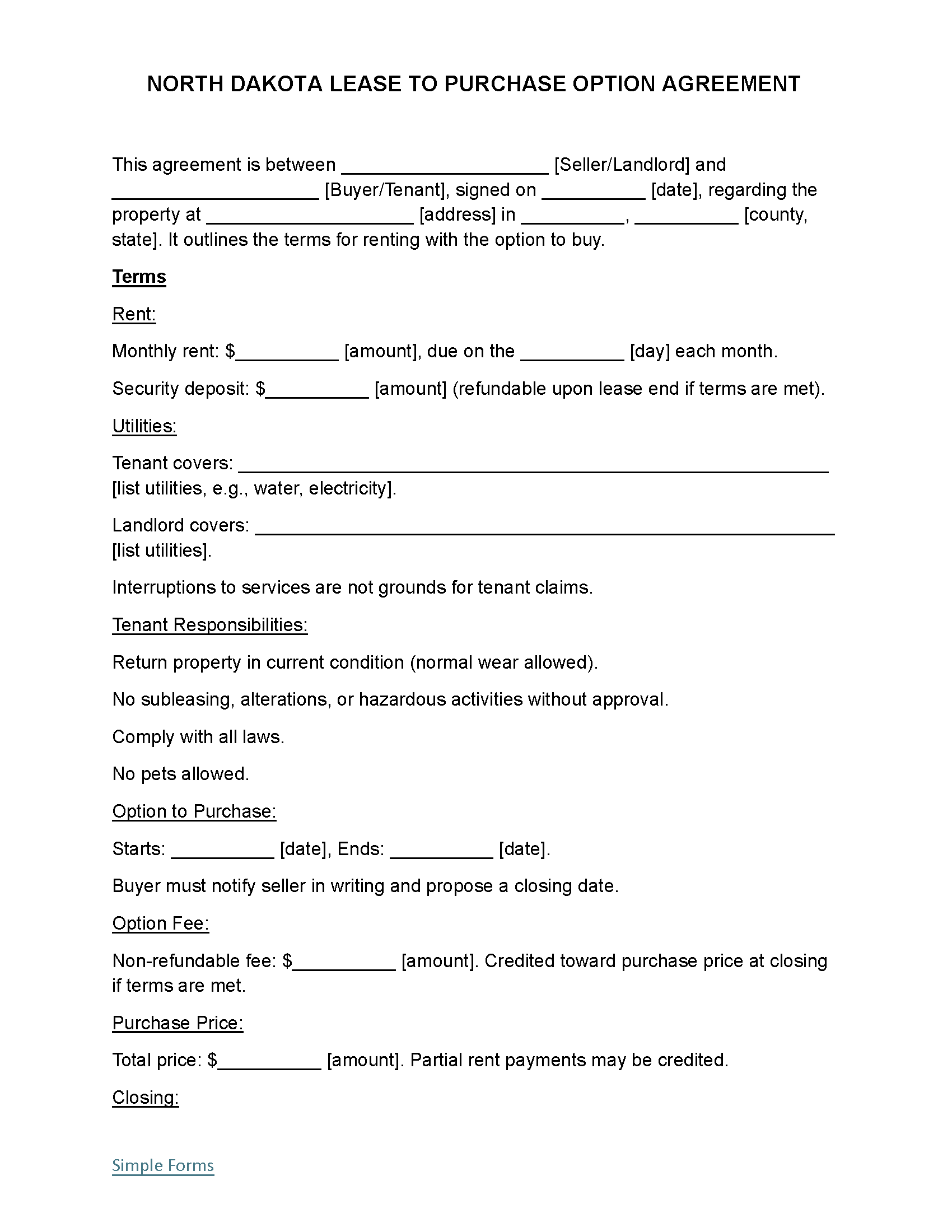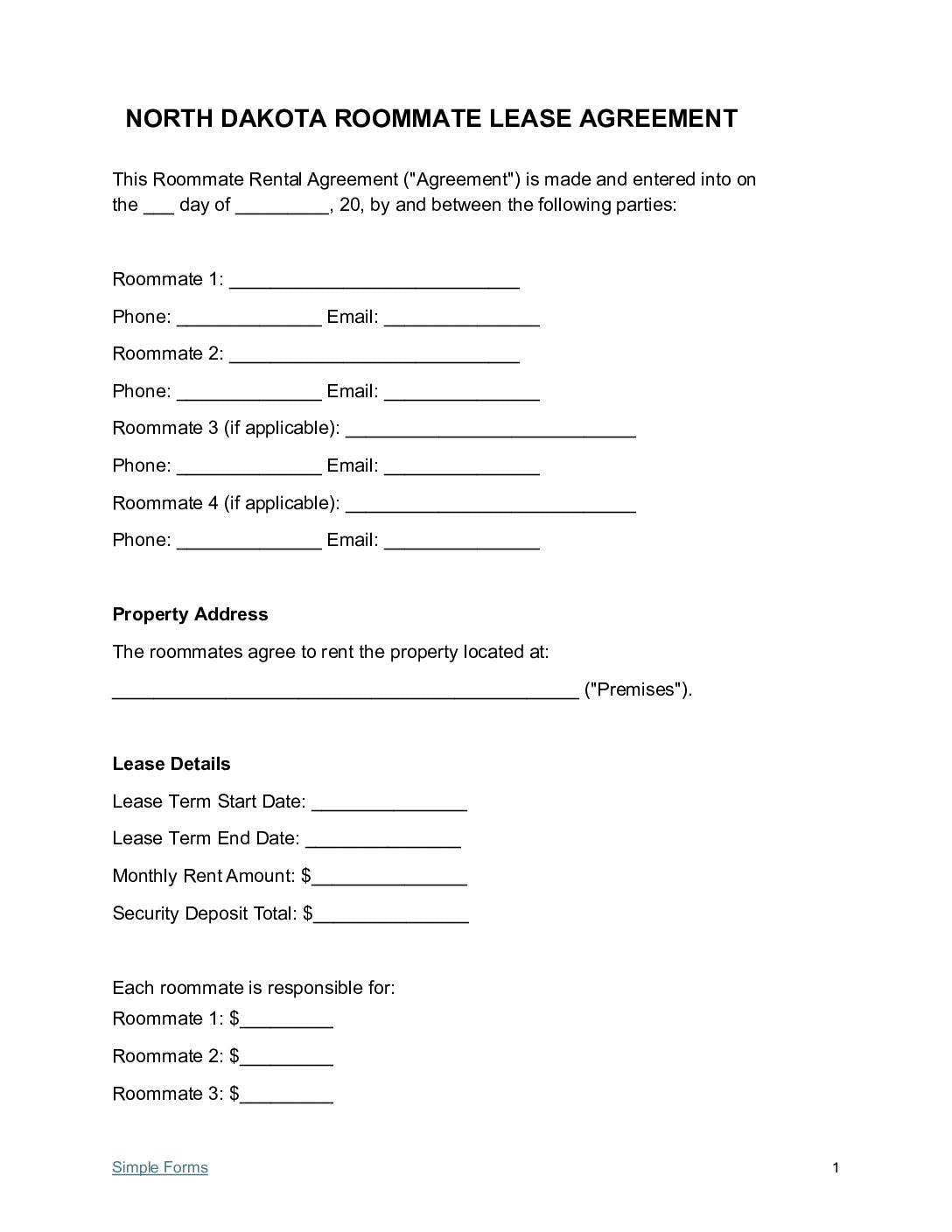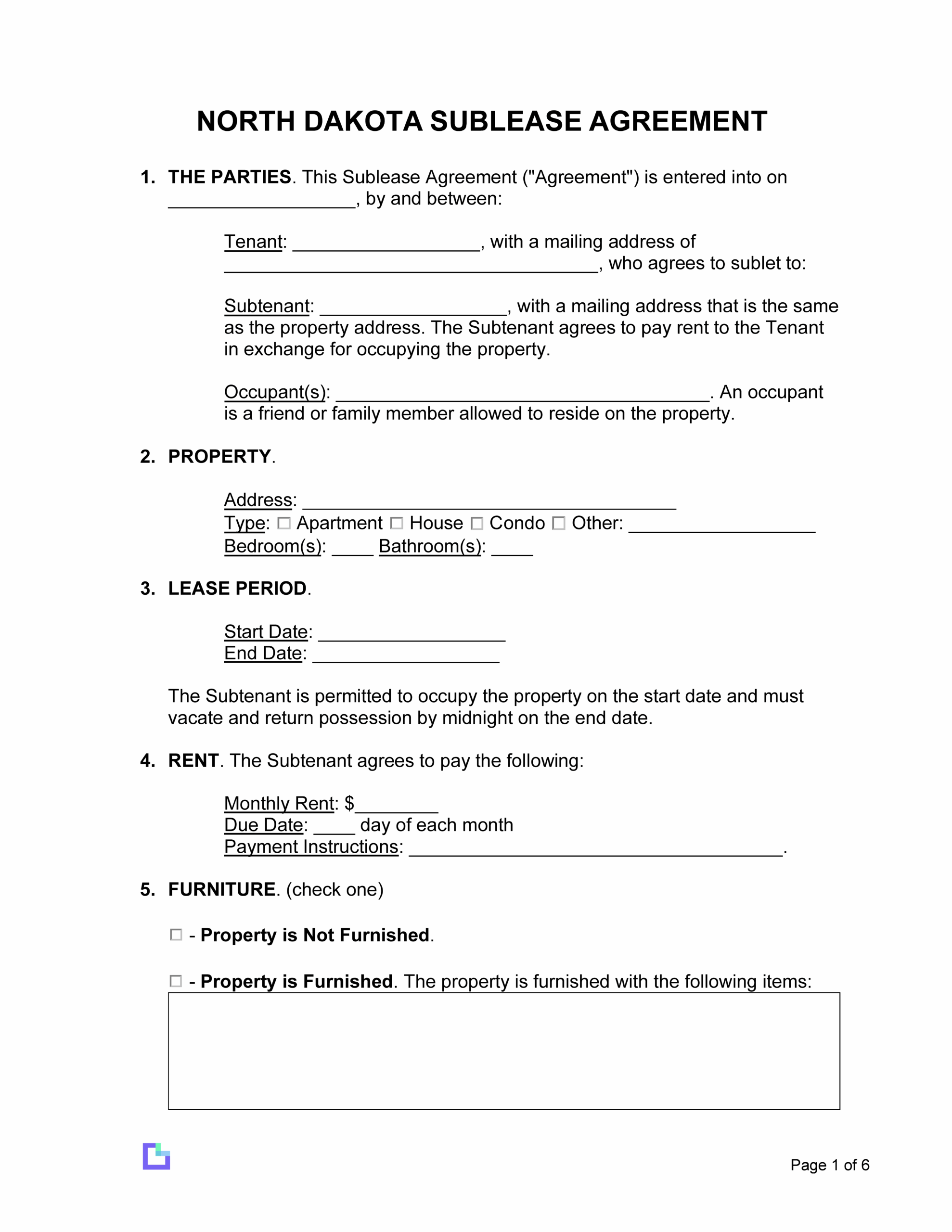By Type (6)
| Residential Lease Agreement – Standard North Dakota Rental Lease Agreement Template for a 1-year lease term or more. Download: PDF | Word (.docx) |
|
| Commercial Lease Agreement – North Dakota Lease Agreement for business use only. Download: PDF |
|
| Month-to-Month Lease Agreement – 30-day lease contract with no end date. Download: PDF | Word (.docx) |
|
| Rent to Own Lease Agreement – Rental lease agreement for Tenants who want an option to purchase. Download: PDF | Word (.docx) |
|
| Roommate Lease Agreement – Use when renting a room to a Tenant who will share common space. Download: PDF | Word (.docx) |
|
| Sublease Agreement – Used when renting to sub-tenants. Download: PDF | Word (.docx) |
What does the North Dakota rental lease agreement form cover?
This North Dakota Lease Agreement includes North Dakota landlord-tenant laws. This agreement form outlines the following:
- North Dakota Residential Landlord-Tenant Act
- Security Deposit Laws
- Lease Termination
- Landlord’s Access to the Property
- Rent Due Date plus Late Fees
- Required Disclosure Forms
North Dakota Landlord-Tenant Laws
Security Deposit Laws
Summary: Landlords and tenants must adhere to the following security deposit laws:
- 30 Days – Landlords must return the deposit within 30 days after the lease ends.
- Itemized List – Deductions must be itemized and provided to the tenant in writing.
- Maximum – The security deposit cannot exceed one month’s rent unless a pet deposit is required, in which case the total may not exceed 1.5 months’ rent.[2]
- Interest on Security Deposits – Landlords are not required to pay interest on security deposits.
Lease Termination
Summary: Both landlords and tenants can terminate a lease under the following conditions:
- Landlord’s Ability to Terminate
- 3-day notice for nonpayment of rent.
- Immediate termination for criminal activity or severe property damage.
- Tenant’s Ability to Terminate
- Tenants may terminate for uninhabitable conditions if the landlord is notified and fails to resolve the issue.
- 30-day notice required for month-to-month leases.
Landlord’s Access to Property
Paying Rent and Late Fees
Summary:
- Grace Period – North Dakota law does not require a grace period.
- Maximum Late Fee – Late fees must be “reasonable” and stated in the lease agreement.
- NSF Fee – Landlords may charge a $40 fee for returned checks.[4]
Required Disclosure Forms
Summary: Landlords must disclose the following to tenants before the move-in date:
- Lead-Based Paint Disclosure Form – All properties built before 1978, landlords must inform tenants about potential lead paint hazards. They must provide an informational packet and obtain a signed acknowledgment from the tenant.
- Move-in Checklist – The state requires that every lease agreement include a checklist detailing the property’s condition at move-in, covering both the interior and exterior.
